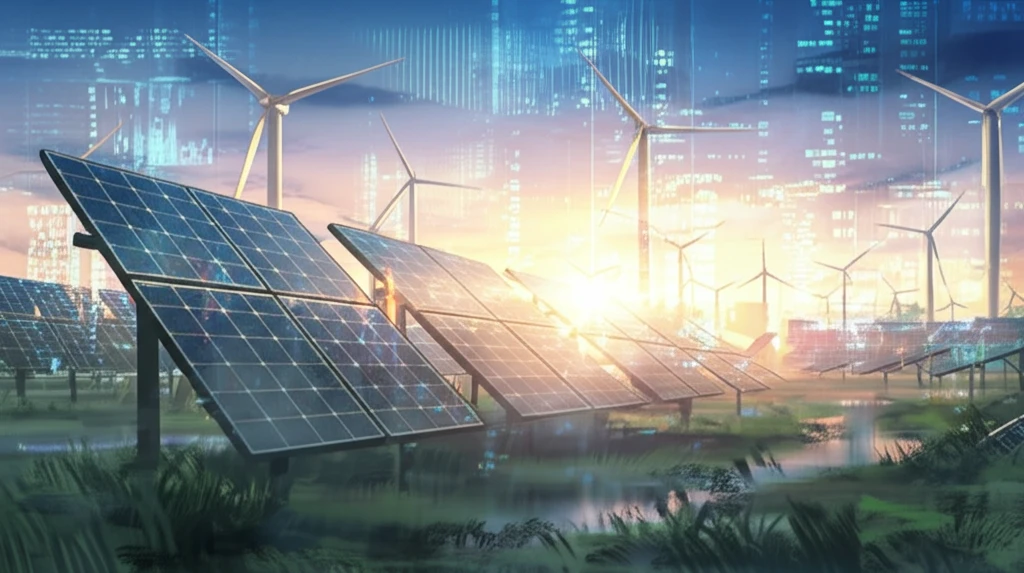
Power Up Your Life: How Hybrid Renewable Energy Systems Are Changing the Game
"Unlock the potential of solar and wind energy with smart control strategies for a sustainable future."
In an era defined by climate concerns and the urgent need for sustainable energy solutions, renewable energy systems have emerged as a beacon of hope. These systems, designed to harness the power of nature, are increasingly being used to generate electricity, reducing our reliance on fossil fuels and mitigating environmental impact. From individual homes to entire communities, renewable energy is transforming the way we power our lives.
Among the various renewable energy technologies, hybrid systems that combine multiple sources, such as solar and wind, are gaining prominence. These hybrid systems offer several advantages, including increased reliability and efficiency. By integrating different energy sources, they can overcome the limitations of relying on a single resource, ensuring a more consistent and stable power supply. This is particularly crucial in remote locations or areas where grid connectivity is challenging.
This article delves into the fascinating world of hybrid renewable energy systems, focusing on a cutting-edge control strategy that optimizes energy extraction from both photovoltaic (PV) solar panels and wind turbines. We'll explore how this innovative approach, known as the Backstepping control method, is revolutionizing the way we harness and manage renewable energy, paving the way for a more sustainable and energy-independent future.
Harnessing the Power of Two: How Hybrid Systems Maximize Energy Extraction

Hybrid renewable energy systems represent a significant advancement in the quest for sustainable energy solutions. By combining different energy sources, such as solar and wind, these systems offer a more reliable and efficient way to generate electricity. The key to their success lies in sophisticated control strategies that can optimize the performance of each component and ensure seamless integration.
- Independent Control: The Backstepping method treats each energy source (solar and wind) separately, allowing for tailored control strategies that maximize their individual performance.
- Maximum Power Point Tracking (MPPT): For solar panels, the Backstepping controller continuously adjusts the operating point to ensure that the maximum power is extracted from the solar array, regardless of changing sunlight conditions.
- Active and Reactive Power Control: For wind turbines, particularly those using Doubly Fed Induction Generators (DFIG), the Backstepping controller manages both active and reactive power, optimizing energy capture and grid stability.
- Lyapunov Stability: The Backstepping method is based on Lyapunov functions, which ensure the stability of the entire system. This means that the system will remain stable and operate efficiently even under fluctuating conditions.
Powering the Future: The Promise of Hybrid Renewable Energy
As we move towards a more sustainable future, hybrid renewable energy systems will play an increasingly important role. By combining the strengths of different energy sources and employing advanced control strategies like the Backstepping method, we can unlock the full potential of renewable energy and create a cleaner, more resilient energy system for generations to come. The journey towards a sustainable future is powered by innovation, and hybrid renewable energy systems are leading the charge.
